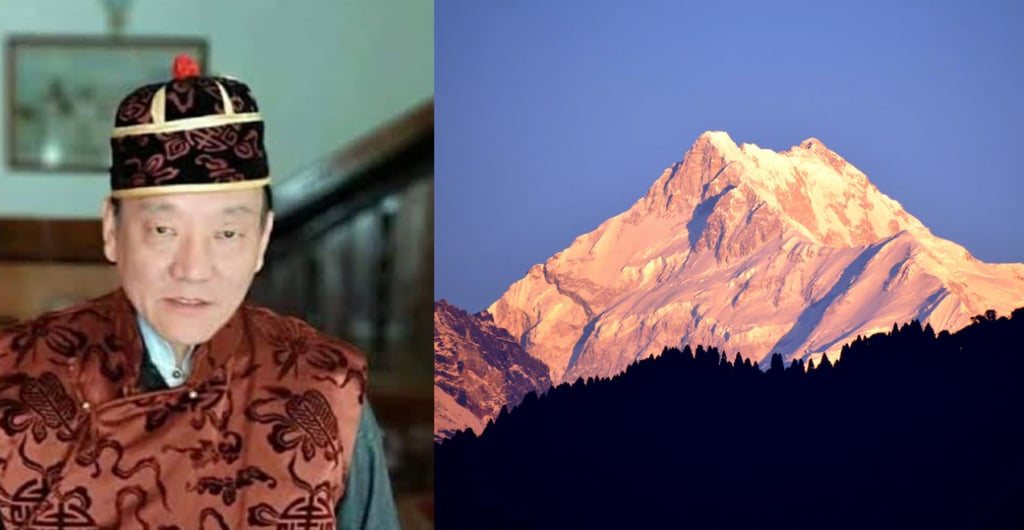Desecration of Sacred Khangchendzonga must be purified: Tseten Tashi Bhutia of SIBLAC
“If such actions were considered necessary in those cases, then how can we ignore the desecration of the most sacred peak of Sikkim?” Bhutia questioned.
LOCAL


A recent military expedition to Mount Khangchendzonga has caused deep concern in Sikkim, as the mountain is considered the most sacred peak by the local people. Many in the state believe the climb has hurt religious sentiments and are now calling for urgent purification rituals. For the people of Sikkim, Mount Khangchendzonga is not just a mountain, but a living deity deeply tied to their spiritual and cultural beliefs.
Tseten Tashi Bhutia, Convenor of the Sikkim Bhutia Lepcha Apex Committee (SIBLAC), released a detailed statement expressing deep disappointment over the incident. He appreciated the Chief Minister’s letter to the Union Home Minister about the issue, but said that preventive action should have been taken before the expedition happened.
Mount Khangchendzonga is not an ordinary mountain for the people of Sikkim. It is seen as a guardian deity, respected and worshipped by followers of many faiths including Buddhism, Hinduism, Jainism, and the Bon tradition. For generations, the people of Sikkim have followed a sacred rule that no one should attempt to climb its peak, out of deep spiritual respect.
SIBLAC’s statement pointed out that similar bans exist in other places. In Nepal, Mount Machapuchare and Mount Khumbila are off-limits because they are considered sacred. Even China has kept Mount Kailash free from climbers, despite not being a religious state. The statement questioned why India could not follow the same respectful approach.
“The peak of Khangchendzonga lies in Sikkim, Bharat Desh. There is only one sacred summit, and it cannot be separated based on the route taken,” the statement said. This was in response to a comment made by the Sangha Minister, who suggested that the expedition took place from Nepal’s side and therefore did not affect Sikkim’s spiritual belief. SIBLAC strongly opposed this view, calling it “illogical” and “misguided.”
The group warned that such a spiritual violation could have serious consequences. In Buddhist beliefs, desecrating a sacred site can lead to natural disasters, diseases, or social unrest unless the site is cleansed through proper religious rituals. Therefore, they called on the Sikkim Government and all relevant religious bodies to urgently begin purification ceremonies, known as shuddhi or punyahavachanam, to ask for forgiveness and restore balance.
SIBLAC also reminded the public and authorities of similar rituals carried out in different parts of India in the past. In Tamil Nadu during the 1970s, temples were washed with Ganga water after the social reformer Periyar entered them. In Varanasi, rituals were reportedly performed after Mayawati visited temples. In 2005, some priests demanded purification after Sonia Gandhi visited the Puri Jagannath Temple. Even during Barack Obama’s visit to areas near Mumbai temples in 2010, some people asked for ritual cleansing.
“If such actions were considered necessary in those cases, then how can we ignore the desecration of the most sacred peak of Sikkim?” Bhutia questioned.
The statement made a strong appeal to political leaders and religious representatives not to mislead the public or try to shift blame. “This is not about politics. This is about faith, tradition, and respect for something deeply sacred,” Bhutia said.
He also warned that people of Sikkim are no longer silent or unaware. “You can’t fool all the people all the time,” he said. “The people are alert, aware, and they know when the truth is being hidden.”
SIBLAC’s message is clear: the spiritual identity of Sikkim must not be compromised. The desecration must be corrected with humility and urgency.
